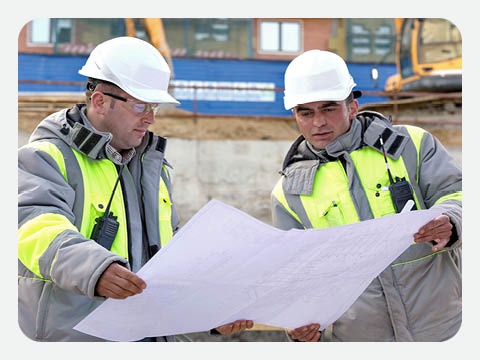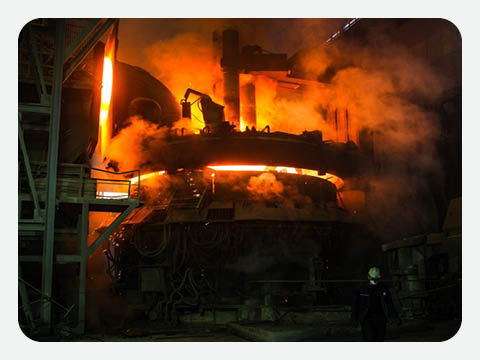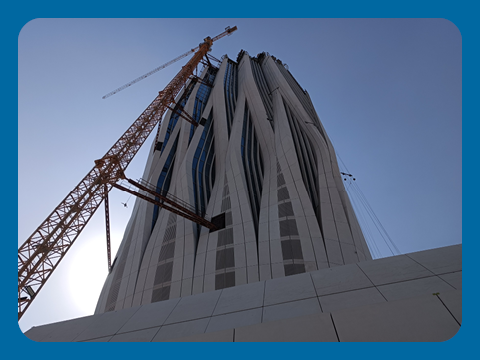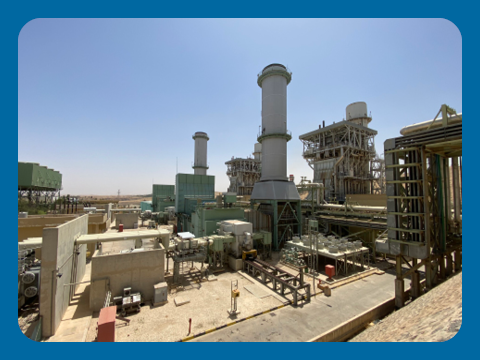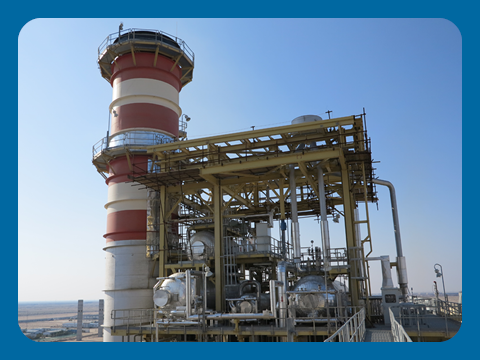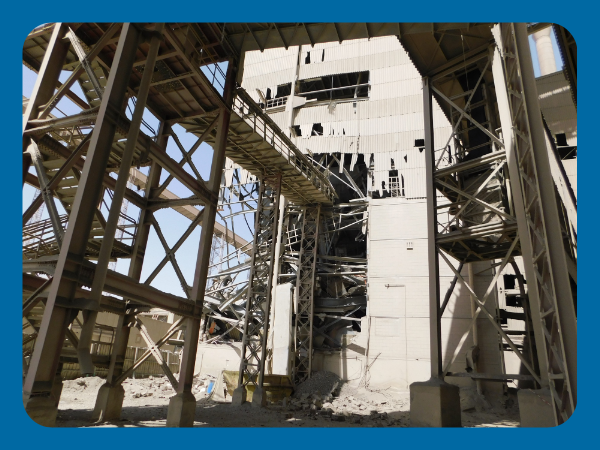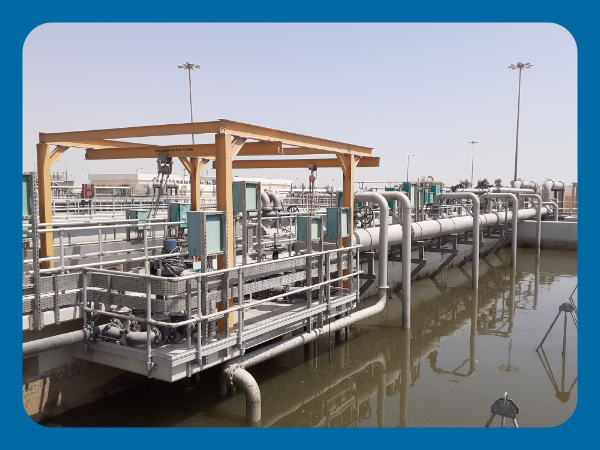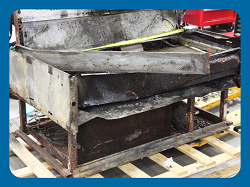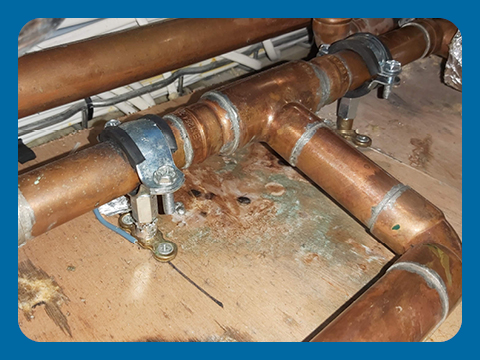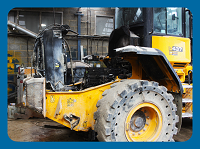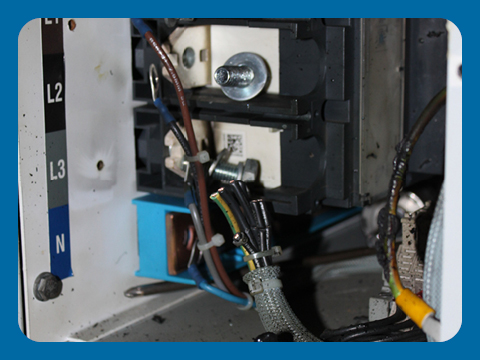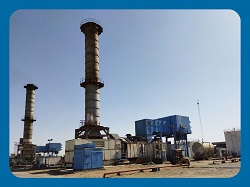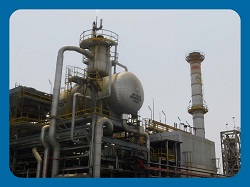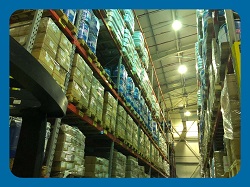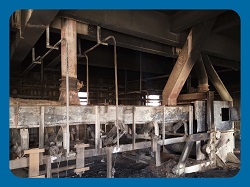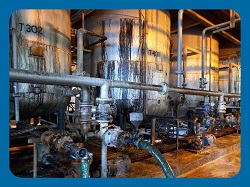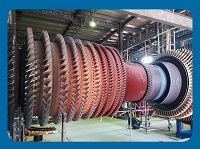Within the past few years an increase in extreme weather has been observed around the world, ranging from severe storms to wildfires to extreme temperatures, in addition to heavy rainstorms that broke records in areas where rain was not considered a serious threat.
As a result, insurers have seen a significant increase in flood claims around the world, including in areas that previously did not suffer flooding, such as the Middle East and North Africa.
Affected Building Systems
Water ingress to buildings causes significant contamination of different building systems. As electromechanical building systems are typically located within the lower basements of buildings, water ingress significantly affects building systems.
Building systems typically affected by flooding include:
- Mechanical Equipment
- Conduits / Wiring Systems
- MCC Assemblies
- Electrical Switchgear
- Transformers
- Cable Vaults
- Cables
- Boilers
- Circuit-boards
- Valves and Pump Systems
- Panels
Contamination vs. Damage
Contaminated equipment is not necessarily damaged. Imagine spreading a handful of sand grains on the surface of a delicate wooden table. Just by having the sand settled on the surface, does not mean that the table-top is now damaged. Instead, it is contaminated. If, however, someone used a cloth to rub the sand grain on the delicate surface, it may then scratch the surface and then the table-top becomes damaged because it has now been altered and is can no longer be returned to the way it was before spreading the sand over it.
The same is true with equipment exposed to water. Depending on the type of flooding, the water would typically have dissolved minerals or suspended contaminants, like sand, mud, sludge or even pathological waste in the case of sewage.
When the water drains or dries out, the suspended contaminants and/or dissolved minerals will remain on the surface of the equipment. This does not mean that the equipment is now damaged. Instead, it is merely contaminated.
If, however, in the presence of high relative humidity and higher temperatures, the contaminates start forming acids, the surfaces would then start corroding at which time, the equipment will become damaged as its condition has now been altered and it can no longer be returned to its original condition, just by removing the contaminants.
With that said, it is critical for operators, owners of equipment, insurers and the loss adjusters, to act quickly to prevent contamination from becoming damage to equipment.
How should insurers respond to a flood claim?
Successful response strategy depends on four critical actions:
Risk Assessment
Before we can proceed with evaluating the damage and developing reinstatement options, we must assess the risk of damage to the different equipment. This process involves understanding the environment where the loss occurred. Early in the process, we must ascertain the following:
- The Incident: In addition to damage caused by water, flooding also introduces contaminants that can range from corrosion and rust, to contamination that can be wiped away without serious long-term effects. The extent of contamination is dependent on the quality of the water—salt water, water polluted by chemicals, and sewage water will all introduce different contaminants to a property and will need to be treated differently. Depending on whether the flood is caused by excessive rainfall, overflow of a sewage system, overflow of a river, or coastal flooding, the quality of the water will vary.
- Contamination: There will be a difference to the extent of contamination and/or damages depending upon the exposure to flooding. A piece of machinery that has simply been splashed by water will be affected to a different extent than a piece of machinery which has been submerged underwater for long periods of time.
- Equipment/Machinery: Different types of machinery will react differently to water exposure. The effects of contamination on a piece of hi-tech equipment found in hospitals or IT equipment in data centres will be different to the effects on machinery used in industrial plants, and subsequently the options available to return the property to operating condition will similarly be different.
- Premises: Different premises will have different equipment on site, as well as different systems in place to cope with drainage.
Mitigation
Following flooding, equipment and all other surfaces would be contaminated with particulates that were dissolved in the water. Contaminated equipment is NOT necessarily damaged unless the material has been, the site must be preserved in order to prevent damage from setting in. Water must be drained from the site.
The relative humidity should be maintained between 45%-55%, which can be monitored by sensors and enforced via ventilation. Drying of flooded electrical equipment involves baking (applied heat in a controlled, regulated manner), ventilation (increasing the air flow around equipment) and drying current (where low voltage is circulated through windings).
Where possible, barriers may be erected to control the spread of water, and the power may be shut off to prevent further damage from occurring.
Damage Assessment
After the scope of contamination has been addressed, the scope of damage must be considered. This often presents a number of challenges, including:
- Flooding that has not been drained
- Response time, as more damage sets in the longer that response time is delayed
- Site hazards that make it unsafe for experts to visit the site
- Extent of damage
- Availability of contractors
- Reliability of repairs
Although it is established that flooding results in contamination that results in corrosion, rust and other destructive features, not all contamination is equivalent to damage. The best option to look at the condition of the equipment is to scientifically test the equipment using wipe samples that will determine whether the destructive contaminants are present or not. Upon review of the sample results, experts will be able to advise whether the equipment is damaged or if it can be restored to operational condition via refurbishment and repair, based upon the extent of the damage in addition to an analysis of what would be the most effective option.
An assessment of the flooded area must be carried out in order to determine the extent of the damage. Equipment must be assessed in detail and individually, as it is unlikely that all equipment will be exposed to the same amount of water, depending on whether the equipment has been submerged in water or if water penetrated through the outside coating. Equipment located in the basement will usually be exposed to the highest amount of flooding and therefore is more likely to be affected badly. In addition to the likelihood of water pooling at the lowest point in a property, basements are often humid and not well-ventilated.
Even among equipment located in the same area, however, the effect of flooding on different pieces of equipment will vary. Mechanical equipment, conduits, MCCs, switchgear, cables, boilers, circuit boards, and transformers will all be affected differently. It is necessary to consider the impact of each type of equipment individually, both when looking at the effects of contamination as well as when considering the options available for reinstatement, recovery or replacement.
Developing Reinstatement Options
Following a flood that has contaminated machinery and equipment, a number of options are available, including replacement, recovery, and reinstatement. The option that is most appropriate for any given loss will vary based upon multiple factors, including:
- Extent of Damage: Damaged equipment with heavy contamination, visible heat or water damage, and signs of electrical shorting will be too severe for any restoration option to be possible. On the other hand, equipment that is undamaged—clean, with no contaminants, shut down, with no signs of heat damage—will not be counted as part of the claim and so will not need to be considered.
- Cost of Repair/Restoration: Depending on the extent of the damage, the equipment in question, as well as other factors, the cost of repair/restoration may outweigh the cost of replacement, even if it is determined to be possible to restore equipment.
Equipment that is eligible for restoration is equipment that is in questionable condition, with some contamination, but with no damage (heat damage, electrical shortage, contamination). After determining that equipment can be restore, the logistics of doing so must be considered:
- What method will be used to restore the equipment? The method statement must be reviewed and evaluated to determine whether it is appropriate for the type of damage and equipment, in order to return the equipment to an acceptable degree?
- Where will the restoration to be done? If the site is still contaminated, then the equipment may need to be carried out in an external location.
- Who will carry out the restoration process? What qualifications do they have to do so?
Replacement can be carried out using one of two options:
- Full Replacement
- Partial Replacement, where only the damaged parts of a piece of equipment are replaced
Replacement is carried out when a piece of equipment is either damaged beyond repair, or when the cost of repair is too high compared to the cost of replacement.
When looking at replacement as an option, the like kind and quality (LK&Q) must be identified. If a replacement is carried out with betterment, the betterment amount must be considered.
In many cases, a combination of all options will be used. This is because equipment within the same property can be affected in different ways by the same loss, depending on the type, age, and location of the equipment. Therefore, a careful examination of all equipment is necessary to determine the best overall approach to reinstatement.

